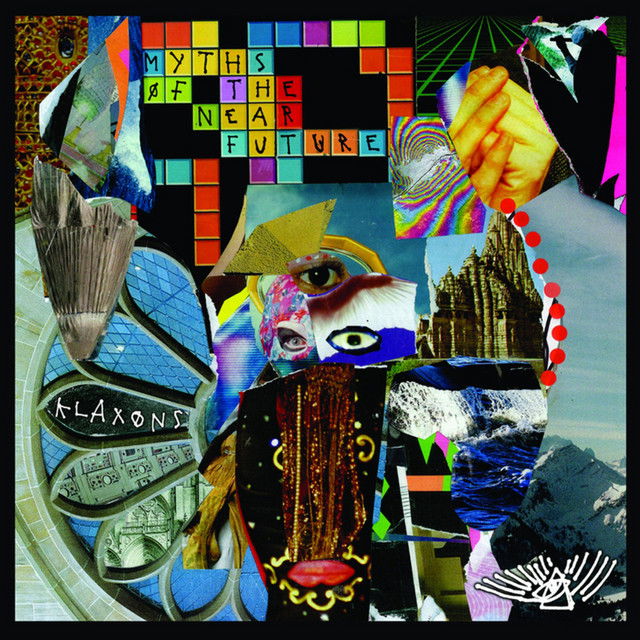Song Stories: Klaxons: Golden Skans
When 'Golden Skans' dropped in early 2007, it wasn’t just another indie single jostling for attention — it was a neon-lit flare, fired high into the music sky, announcing Klaxons as the spearheads of a new sound and spirit. Emerging from London’s thriving underground scene, Klaxons weren’t simply writing songs; they were igniting a movement. "New Rave" fused the hedonism of dance culture, the glowstick euphoria of the rave scene, the cosmic explorations of '60s psychedelia, the raw urgency of '70s punk, and the synthetic shimmer of '80s electronic pop into one delirious sound.
At just under three minutes long, 'Golden Skans' feels like a lucid dream. Its opening , that hypnotic, shimmering synth riff, instantly captures a feeling that's both nostalgic and otherworldly. When Jamie Reynolds' voice floats in, there's a warmth, a yearning, a sense of cosmic romance that sets it apart from the brashness of their contemporaries. The track feels like a portal into another dimension. Catchy enough for the indie dancefloors, deep enough for bedroom listening, and weird enough to hint at something bigger lurking beneath the surface.
Produced by James Ford. One half of Simian Mobile Disco and one of the UK's most sought-after producers 'Golden Skans' was recorded at the legendary Rockfield Studios in Monmouthshire, Wales. It's a place steeped in musical magic: Queen recorded 'Bohemian Rhapsody' there, Oasis battled their way through '(What's the Story) Morning Glory?'
Ford’s production on 'Golden Skans' is nothing short of masterful. He captures the band's restless, chaotic energy and wraps it in a warm, analog glow, balancing their wild spirit with pristine melodies and tight, punchy rhythms. At the time, Ford was quickly earning a reputation for his uncanny ability to distill a band's raw essence without sanding down their edges. Not long after 'Myths of the Near Future', he would help shape albums like Arctic Monkeys' 'Favourite Worst Nightmare' and later 'AM' both records that would become modern classics in British music.
In the years that followed, Ford’s influence only grew. He played a crucial role in helping a reunited Blur craft their reflective comeback album 'The Ballad of Darren', guided Fontaines D.C. towards their most accessible and expansive sound yet on 'Romance', and helped Pulp reconvene and release a new album, their first in nearly 25 years with 'More'.
Working with Klaxons, Ford leaned into their fascination with both the ancient and the futuristic. 'Golden Skans' sounds like a pop song from a parallel universe
'Golden Skans' sits at the very heart of Klaxons' debut album Myths of the Near Future, a record that remains a dazzling artifact of the mid-2000s indie scene. The album, named after a collection of short stories by science fiction writer J.G. Ballard is packed with surreal imagery, sci-fi references, and a genuine thirst for transcendence.

Tracks like 'Atlantis to Interzone' a frantic, pounding explosion of synth and distortion showcased their more aggressive side, while songs like 'Gravity's Rainbow' wrapped dense literary references inside pogoing, neon-coloured choruses. 'Isle of Her' and 'Four Horsemen of 2012' stretched even further, blending dubby basslines with ghostly vocals and a sense of end-times euphoria.
One of the unexpected highlights of 'Myths of the Near Future' is Klaxons' cover of 'It's Not Over Yet', originally a late-'90s dance anthem by Grace. Instead of replicating the glossy trance of the original, Klaxons completely reinvent it slowing down the tempo, drenching it in swirling guitars, and injecting it with a haunting, almost desperate energy. In their hands, 'It's Not Over Yet' becomes an end-of-the-world singalong, transforming a euphoric club classic into a bittersweet anthem of resilience. It’s a testament to the band’s ability to blur genres and eras. Pulling a song from the dancefloor and dragging it, bruised and brilliant, into the glowing chaos of their own universe.
When 'Golden Skans' hit the UK charts, it didn't just climb it soared, peaking at No. 7 and earning heavy rotation across radio stations and music TV channels like MTV2 and Channel 4’s late-night shows. Its surreal, low-budget video featuring the band dressed in glowing, skeletal costumes moving through a stark black void became one of the iconic visuals of the era. It was psychedelic, DIY, and charmingly chaotic just like the band themselves.
More than just a hit, 'Golden Skans' helped define a very specific moment in British music culture. For a brief, brilliant time, it felt like indie music could be truly weird again playful, theatrical, and boundaryless.
The success of 'Myths of the Near Future' catapulted Klaxons far beyond the indie underground and into the mainstream spotlight. In 2007, the band won the coveted Mercury Prize, beating out stiff competition from the likes of Amy Winehouse, Arctic Monkeys. Around the same time, they also picked up a Brit Award nomination for Best British Breakthrough Act, further cementing their place as one of the most exciting new bands of the era. For a group who had started out throwing chaotic, neon-soaked gigs in sweaty London clubs, it was a surreal and triumphant leap into the mainstream, without ever compromising their weird, wild vision.
It was a real exciting time for indie music in Britain and Klaxons were one of the bands who were at the forefront of that.
Thank you for reading